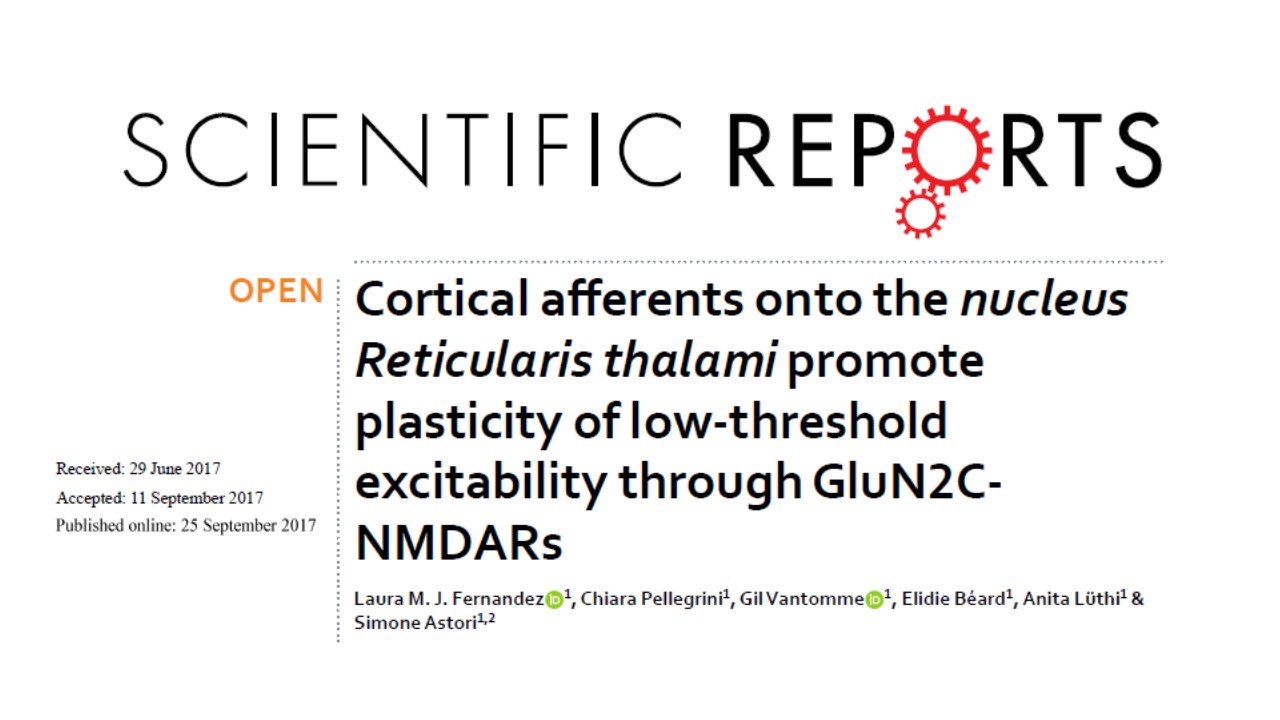Which are the synaptic substrates for plasticity during sleep?
How do they work and what are the consequences on sleep wand waking?
This paper unravels a novel form of plasticity mediated by an unusual isoform of the NMDA receptor that contains GluN2C-subunits. It is expressed at corticothalamic synapses and can trigger long-term modifications of responsiveness to cortical input in the thalamic reticular nucleus. Result: More delta waves during thalamocortical synchrony at the expense of slow waves.
Scratching our heads on: Is this a mechanisms by which sleep depth can be regulated as a result of learning experience? How will it affect attentional processed during wake?



